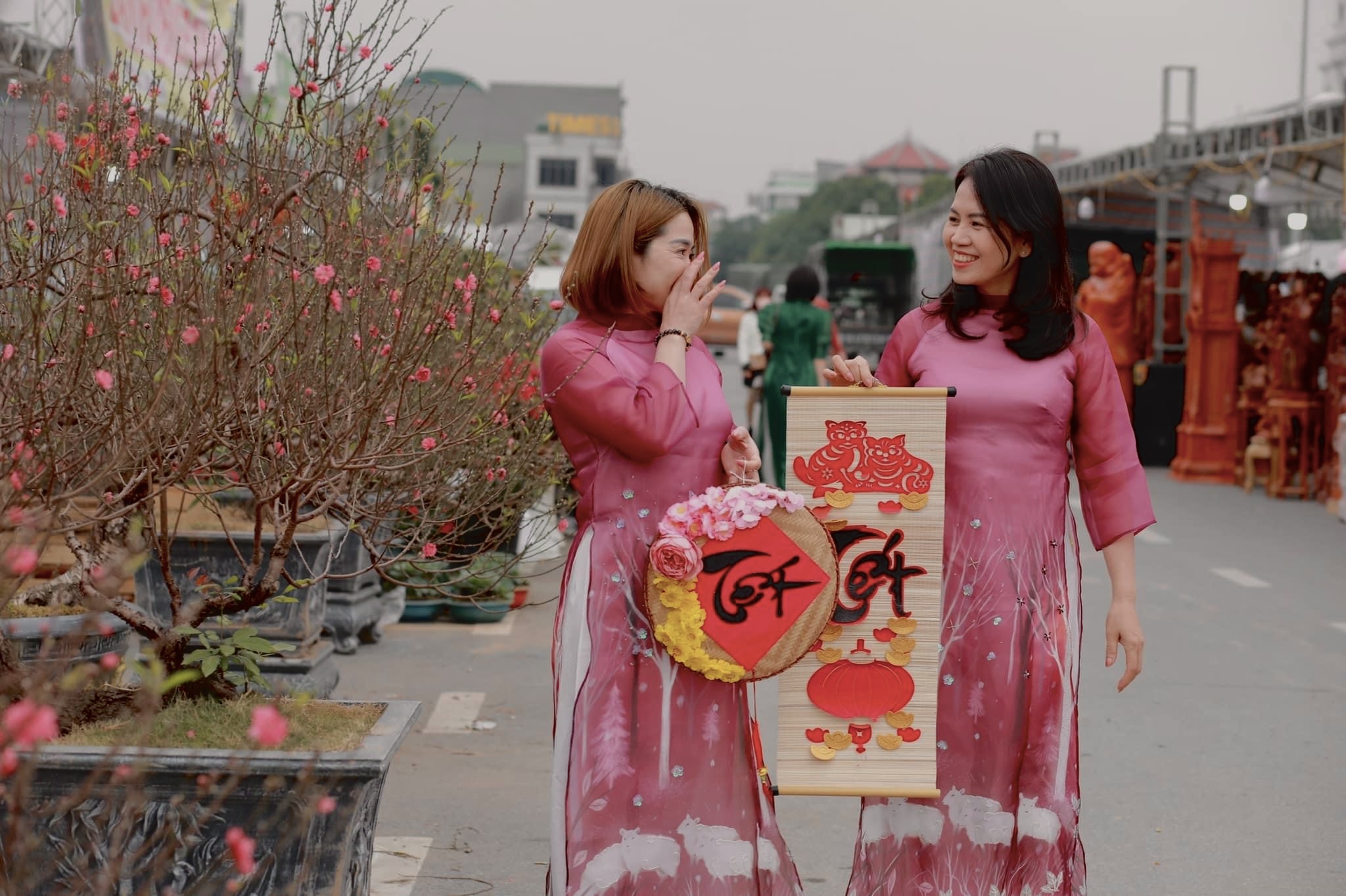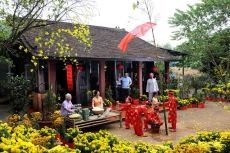Tết Holiday – Vietnam Traditional Lunar New Year
The dates of Lunar New Year differs every year but it generally takes place around late January or February. This year 2021, the holiday begins from Feb 10 to Feb 16. Because of the fact that Vietnamese families are so close-knitted, Tet Holiday is considered the best occassion for family members to return home and get together. During Tết, Vietnamese spend time shopping for the New Year, go to Pagodas and Temples. The items of shopping range from food to clothing to decorations for the house. The Vietnamese believe that Tet Holiday is an occasion to enjoy life after a full hard-working year, thus people forget their struggles and focus on making the celebration as festive as possible. Due to the high regard in which people hold it, Tết, as often as not, is consumed with unique, distinctive colors and flavors. Let’s take a look at some traditions and customs typical of this special holiday in Vietnam.

1. Food
Bánh chưng (Sticky square cake)
Bánh Chưng is a food made from glutinous rice, mung bean and pork, added with many other ingredients. Bánh Chưng is covered by green leaves (usually banana leaves) and symbolizes the Earth, invented by the prince Lang Liêu from Hùng King dynasty. Besides traditional reason, Bánh Chưng is chosen as the main food for Tết holiday because of it can last long for days in Vietnamese weather (Banh Chung can survive at room temperature for nearly 1 month).
Giò, chả (Vietnamese sausage)
Giò chả (Vietnamese ham/sausage) is another traditional food in Tết holiday, and usually served with Xôi (sticky rice) and Bánh Chưng. Giò is different from Chả since Giò is boiled and Chả is deep-fried. Chả is also made of lean pork and ingredients, but Chả is not wrapped by leaves and boiled but deep-fried in oil.

Thịt kho hột vịt (Braised Pork Belly with Duck Egg)
This dish is more popularly enjoyed in the South than in the North, however, noone can deny the irresistable aroma, flavor and the amazing compatibility of this dish with a bowl of steaming rice. The Pork Belly and Egg is cooked with coconut juice and fish sauce until it becomes tender and absorb all those amazing flavor. The dish is so universal and easy to make that it has become one of the most popular dishes served during Tet Holiday.
Xôi (Sticky rice)
Xôi is also a very important part of Têt holiday in Vietnam, along with Bánh Chưng, xôi is the main staple foods for Tết holiday. Xôi can be seen in many forms: Xôi Lạc (sticky rice with peanuts), Xôi Đỗ Xanh (sticky rice with mung bean), Xôi Gấc (sticky rice with special “gấc” fruit). Among these types, xôi gấc is favorite the most by people because of its special red color – symbolizes the luck and new achievement for the New Year.
Mứt (Jam)
Mứt Tết (Tết jam) is not a food to serve in a meal during Tết holiday, but more like a snack to welcome guests in this special period. This once-in-year mix of snack is very large in variety, with so many tastes: ginger, carrot, coconut, pineapple, pumpkin, lotus seed, star fruit, etc.
2. Traditional customs
Even though many Vietnamese traditions are based on old cultural beliefs that may strike some as a little superstitious, families believe that their activities during Tết must involve happiness, joy, and good luck. Below are some of the popular, long-standing Tết traditional customs that have stood the test of time from generations to generations.

Giving Lì xì (lucky money)
The first day of Tết is reserved for the nuclear family. Children receive a red envelope containing money from their elders. This tradition is called mừng tuổi (happy new age) in the north and lì xì in the south. Usually, children wear their new clothes and give their elders the traditional Tết greetings before receiving the money.
Xông nhà
Since the Vietnamese believe that the first visitor a family receives in the year determines their fortune for the entire year, people never enter any house on the first day without being invited first. The act of being the first person to enter a house on Tết is called xông đất, xông nhà or đạp đất, which is one of the most important rituals during Tết. According to Vietnamese tradition, if good things come to the family on the first day of the lunar New Year, the entire following year will also be full of blessings. Usually, a person of good temper, morality and success will be the lucky sign for the host family and be invited first into the house.
During subsequent days, people visit relatives and friends. Traditionally but not strictly, the second and even painting their home in anticipation of spring, settle old debts and disputes, and pledge to behave nicely and work hard in the new year.
3. Decorations
Traditionally, each family displays “Cây nêu”, an artificial New Year Tree consisting of a bamboo pole 5 to 6 m long. The top end is usually decorated with many objects, depending on the locality, including good luck charms, origami fish, cactus branches, etc.
At Tết every house is usually decorated by hoa mai – Ochna integerrima (in the central and southern parts of Vietnam) or hoa đào – peach flower (in the northern part of Vietnam) or hoa ban (in mountain areas). In the north or central, the kumquat tree is a popular decoration for the living room during Tết. Its bright orange-colored fruits represent the fertility and fruitfulness that the family hopes for in the coming year.

Hoa Mai – a symbol of Good Luck in the Tet Holiday. Photo: hoamaitet.com

Hoa Dao can be seen at Nhat Tan flower garden, is a symbol of Tet in the North





